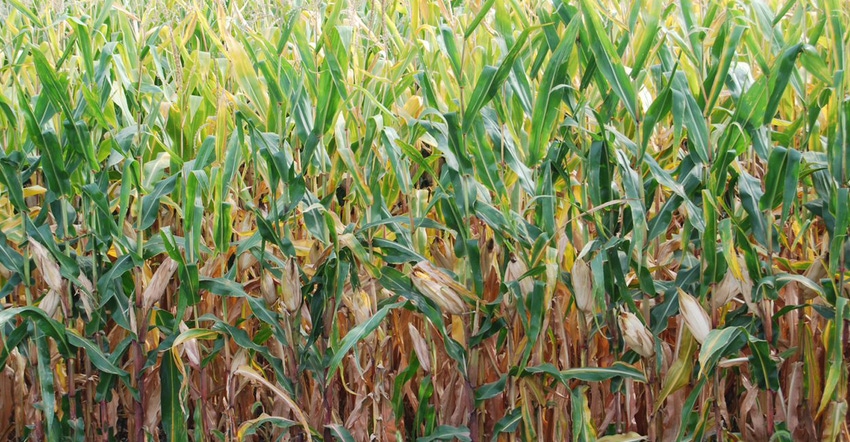August 13, 2019

When the truck or wagon leaves your field full of the corn crop you just harvested, you are exporting a significant amount of fertilizer off your property. If you grew 250 acres of 200-bushel-per-acre corn and 250 acres of 50-bushel beans that year, your grain harvest removed over 12.5 tons of phosphate and almost 13 tons of potash. Managing that can be very valuable to you!
ISU has been conducting soil fertility research at several Iowa locations for decades, and it continues. The information gathered and ISU’s nutrient management recommendations are always reviewed for changes and updates. In 2013, ISU Extension soil fertility specialists Antonio Mallarino and John Sawyer released an updated version of the ISU publication A General Guide for Crop Nutrient and Limestone Recommendations in Iowa. It is a reference I use often.
With continued tight margins, many farmers are considering cutting expenses on soil fertility by reducing the amount of fertilizer they apply per acre. You shouldn’t do that equally on all acres — you need to do it wisely, and this research can help you make some of those tough decisions. Knowing the fertility needs of your soil through soil testing is the key for good decisions, but
Reducing risk of yield loss
The general concept in these recommendations is for long-term profitability and reducing risk of yield loss by emphasizing response-based applications for very low and low soil test categories, and removal-based maintenance, replacing what has been removed with crop harvest for soils testing in the optimum category. These recommendations do not encourage the rapid buildup of soil test levels when in the low and very low categories, but rather they have longer-term profitability goals.
The category soil test ranges (very low, low, medium, high, very high) are defined by how frequently crop yields increased when fertilizer was applied to soils testing at different levels. The very low soil test category areas saw yield increases 80% of the time, and fields in the low soil test range saw yield increases 65% of the time. On the other end of the test scale, soil tests in the high range had a positive yield response only about 5% of the time, and in the very high range less than 1%. Where would you like to put your fertilizer dollars?
The ISU publication also discusses some newer soil tests being run where samples are not dried in the lab; they are analyzed as a moist or slurry sample. The results are now calibrated to determine when yield responses are likely to occur, as has been done with the other soil testing methods.
Recent research also indicated that an adjustment was needed for potassium tests where samples are dried in the lab. Additionally, adjustments were made to both crop nutrient concentrations and default crop yields needed to estimate nutrient removal for maintaining soil test levels in the optimum category.
Crop nutrient removal rates updated
The nutrient concentration of the crop removed has changed and is now lower than the nutrient content was 30 years ago. Research studies analyzed in Iowa and other states have shown that to be true for corn and soybeans, plus we also now have better information of nutrient concentrations for many other crops and harvested plant parts — such as corn harvested for silage or green chopped, or cornstalks baled.
Here are a couple of examples. The “old” ISU publication indicated that a bushel of corn removed 0.375 pound of phosphate and 0.3 pound of potash. The new table in the updated ISU publication lists a bushel of corn removing 0.32 and 0.22 pounds, respectively.
If you removed 200 bushels of corn from a field, you would have hauled out about 64 pounds of phosphate and 44 pounds of potash. These numbers are set at the level where 75% of the samples analyzed would fall below this level, not an average of all samples.
Likewise, soybeans are now at 0.72 and 1.2 pounds of phosphate and potash removed per bushel, where previously they were estimated at 0.8 and 1.5 pounds removed per bushel. Therefore, 60 bushels of beans removes about 43 pounds of phosphate and 72 pounds of potash.
Forage nutrient removal amounts in the new ISU publication are based on typical harvest moisture levels, not on a dry matter basis like previously reported. Corn stover, per ton removed at 15% moisture, has a removal rate of 4.8 pounds of phosphate and 18 pounds of potash under the new standards, down from the older 5.9 and 25 pounds, respectively.
The publication “A General Guide for Crop Nutrient and Limestone Recommendations in Iowa” is a great soil fertility reference. I encourage everyone who grows crops to carefully read the entire publication and get familiar with the nutrient needs of your crops.
DeJong is an ISU Extension field agronomist based at LeMars in northwest Iowa. Contact him at [email protected].
About the Author(s)
You May Also Like






